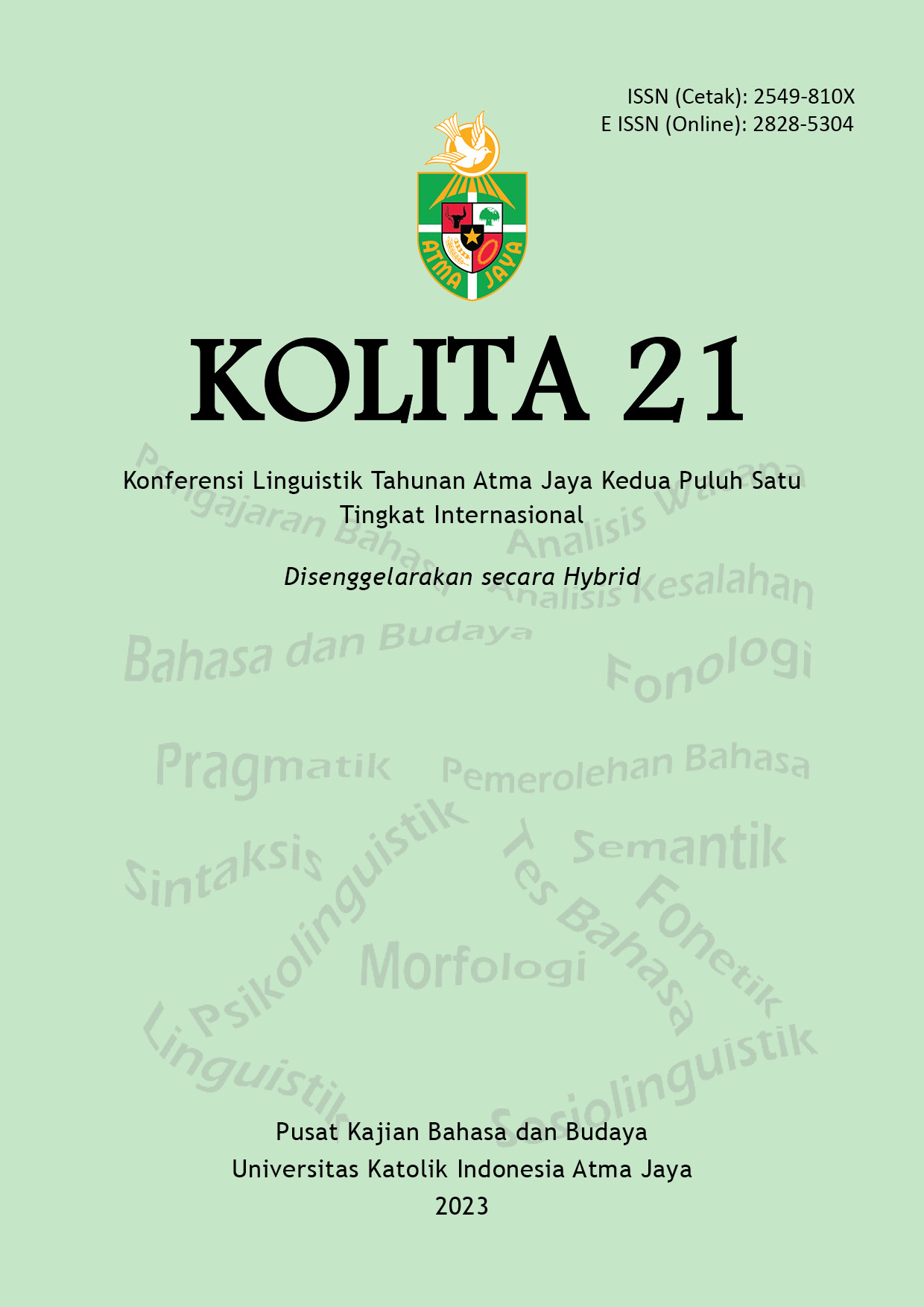VISUALITAS PENANDA DOMINANSI KONTEKS SIBERTEKS DALAM CYBERPRAGMATICS
DOI:
https://doi.org/10.25170/kolita.21.4854Keywords:
Cybertext Context, Cyberpragmatics, Visuality, Dominance MarkersAbstract
Linguistic-pragmatic studies in conjunction with information technology has given rise to a new discipline in pragmatics called internet pragmatics or cyber-pragmatics. In this new pragmatics discipline, the speaker's intent cannot only be interpreted by replacing the conventional extra-linguistic context because the elements of that context are no longer sufficient to be used as a means of analysis and interpretation of intent. The dimensions of visual context as a marker of the dominance of cybertext context elements cannot be ignored in understanding the meaning of cybertext data. This cyber-pragmatics research aims to describe the manifestations of the visual dimensions that mark the dominance of cybertext context elements. The formulation of the main problem of this research is presented as follows: How is the manifestation of the visual dimensions marking the dominance of cybertext context elements in the cyber-pragmatics perspective? This study uses a phenomenological approach with a qualitative descriptive method. The target object of the research is the forms and functions that mark the visuality of the cybertext context. Furthermore, the research data is in the form of snippets of texts on the internet in which the target object of the research is contained, namely the form and function of cybertext context visual markers. Sources of substantive data for this research are social media texts in which there is research data, namely the form and function of visual markers in the cybertext context. Taking into account various limitations, research data is limited to a maximum of 9 snippets of cybertext from social media Instagram which are accessed around the time of the research. Data collection was carried out by applying the listening method to cybertext texts. The technique used is the read-note technique. With the methods and techniques of data collection, this research data is well identified for further classification. The data classification step is followed by the step of compiling data types so that they are ready for analysis. Data analysis was carried out by applying the extralingual equivalent method. The analysis technique used is the comparison technique. The analysis is carried out on data that has been properly typed so that interpretation is carried out easily. The next step is to present the results of the analysis and interpretation of the data using informal methods through ordinary language, not by interpreting symbols to convey certain rules. The results of this study are in the form of findings of visual manifestations in the multimodality cybertext context which are detailed as follows: (a) Visual Manifestations in the Form of Graphic Variations; (b) Visual Manifestation in the Form of Image Variations; (c) Visual Manifestations in the Form of Color Variations; (d) Visual Manifestations in the Form of Figure Variations; and (e) Visual Manifestations in the Form of Variations in Forms.





